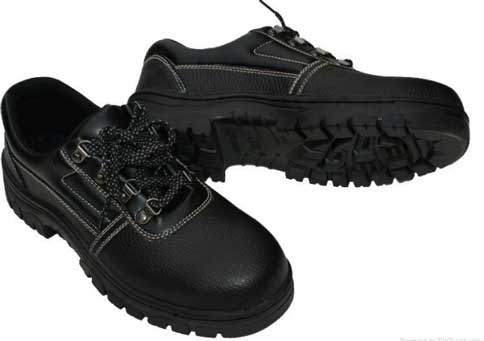1. Anti-static work shoes and conductive work shoes:
It is used to prevent accidents caused by static electricity on the human body. Among them, conductive shoes can only be used in places where the risk of electric shock is not great. In order to ensure the effect of eliminating static electricity on the human body, the bottom of the shoes must not be stuck with insulating impurities, and it is not suitable to wear high Insulated socks.
2. Insulated work shoes (boots):
It is used for the protection of electrical workers to prevent electric shock accidents within a certain voltage range; insulated shoes can only be used as auxiliary safety safety products, and the mechanical properties must be good.
3. Anti-smashing work shoes:
The main function is to prevent falling objects from hurting the feet. The front half of the shoe has impact-resistant materials.
4. Anti-acid and alkali working shoes (boots):
Used in the workplace where there are acid and alkali and other corrosive liquids such as acid and alkali splashing on the ground, the bottom and leather of acid and alkali resistant shoes (boots) must have good acid and alkali resistance and permeability resistance.
5. Anti-piercing work shoes:
It is used to protect the soles of the feet and prevent being stabbed by various hard objects.
6. Steelmaking work shoes:
The main function is to prevent hot soup and puncture cuts, can resist static pressure and temperature, and is not flammable.
7. Oil-proof work shoes (boots):
Used in places where oil or oil splashes on the floor.
8. Cold-proof work shoes (boots):
It is used to protect the feet of low-temperature workers to avoid frostbite. Cold-proof shoes (boots) are divided into two types: no heat source and with heat source. The former are cotton shoes, fur shoes (boots), etc., and the latter are thermal shoes (boots), which usually use fuel (such as oil, carbon) and electric heat as the heat source.
9. Waterproof work shoes (boots):
It is used in work sites where ground surface water or splashing water. Varieties include industrial and mining waterproof shoes, salt flat shoes, aquatic boots, rice-planting boots, etc. These boots require wear resistance, slip resistance, and puncture resistance. The rubber materials of aquatic and salt flat boots must also be resistant to salt corrosion.





